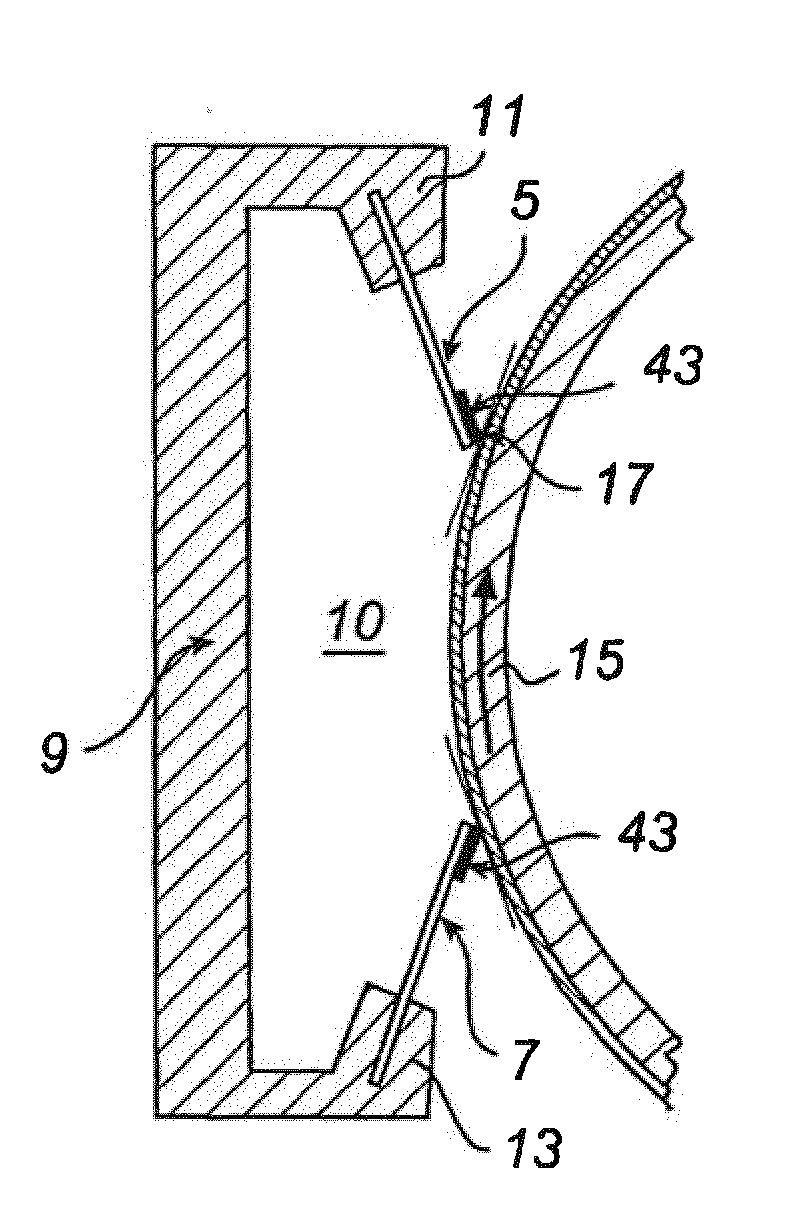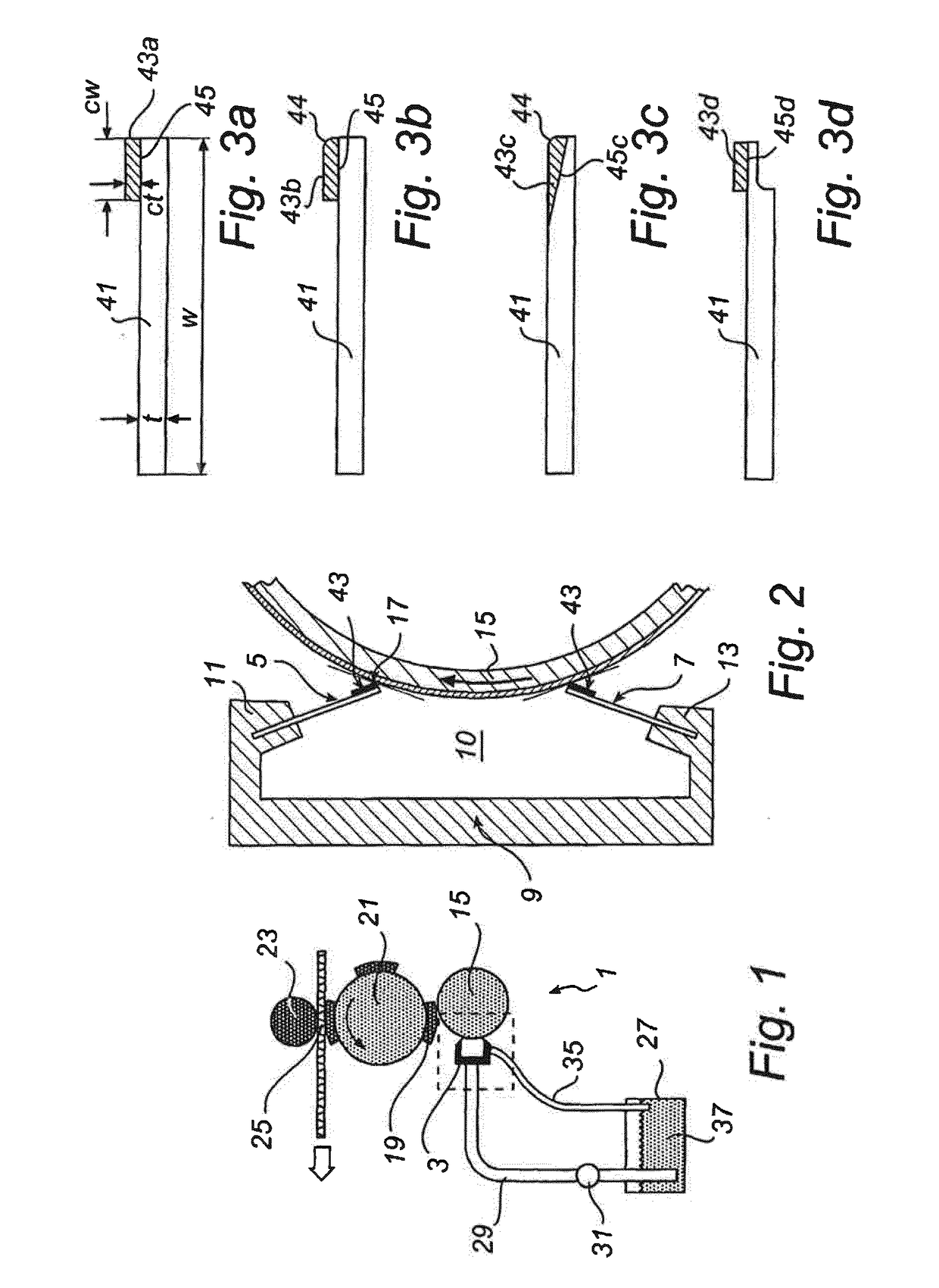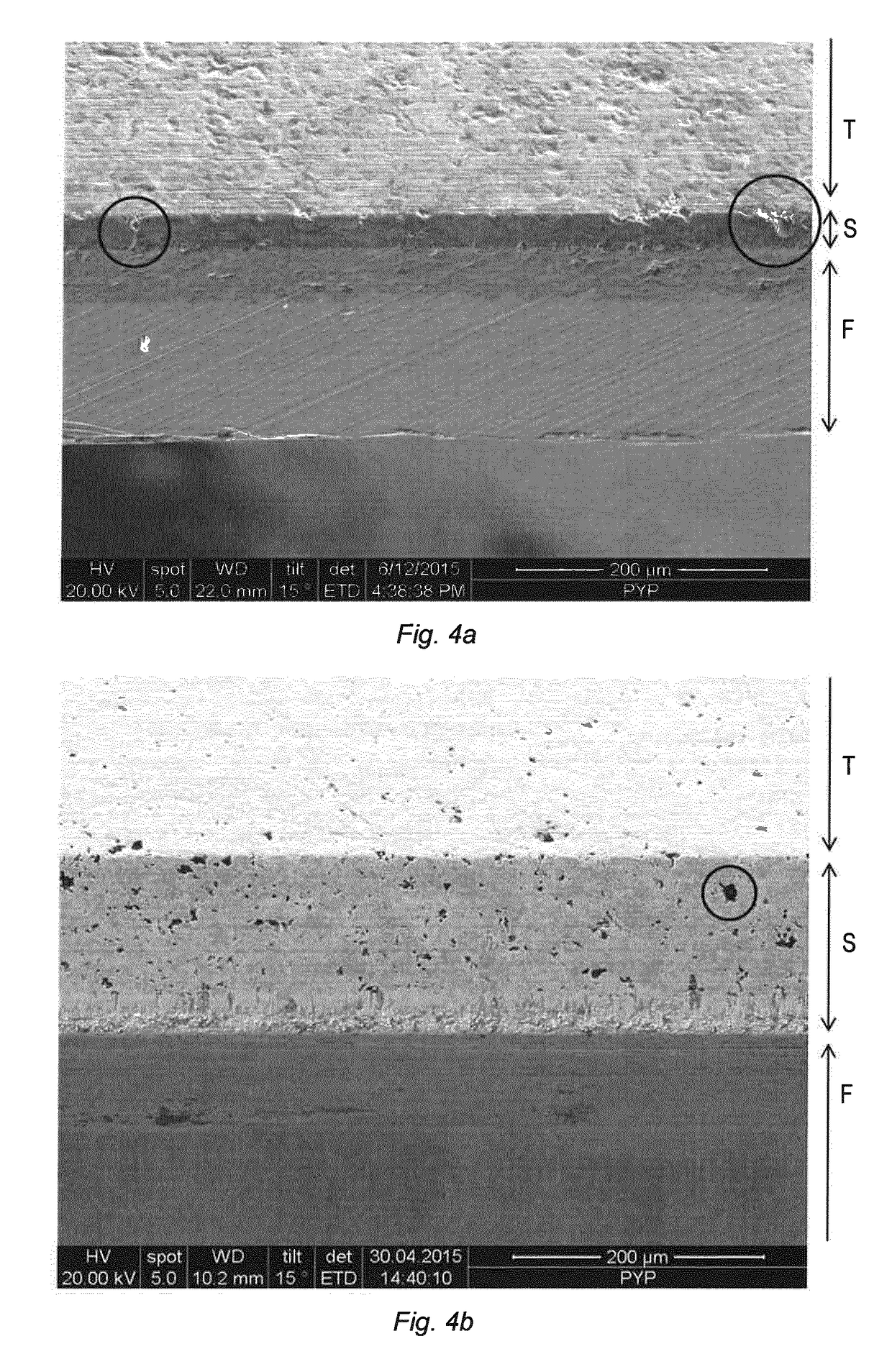Doctor blades, inking arrangement and use of doctor blade in flexographic printing
a technology of inking arrangement and doctor blade, which is applied in the direction of papermaking, rotary intaglio printing press, printing blanket, etc., can solve the problems of not meeting the requirements of longevity and machine productivity, and the blades are less appropriate to correctly doctor the increasingly delicate anilox roller surface, etc., to achieve outstanding operational productivity and excellent printing quality.
- Summary
- Abstract
- Description
- Claims
- Application Information
AI Technical Summary
Benefits of technology
Problems solved by technology
Method used
Image
Examples
example 1
Behavior
[0044]Pin-on-Disc tribometer tests according to ASTM G 99 were conducted to analyze the abrasion wear and friction behavior of a variety of materials listed in the tables below.
[0045]A fixed pin coated by thermal spraying with the respective materials listed in the tables was loaded against rotating discs of cast iron. Cast iron was selected to represent an appropriate counter surface in order to accelerate the wear process to be evaluated. The wear of the pin coating was calculated as the mass loss divided by the sliding distance and the load, and was reported as the pin wear coefficient. The wear of discs was measured as the depth of the wear track, and was reported as the disc wear depth. The pin and disc temperatures were measured. The friction force was calculated as end of test average.
Material(oxide ceramics, 60 wt % Al2O397 wt % Al2O3comparative examples)40 wt % ZrO23 wt % TiO2100 wt % Cr2O3Pin wear coefficient 8.64E−101.57E−081.25E−08(g m−1 N−1)Disc wear depth (μm)1...
example 2
uality of the Blade and Material Compatibility
[0046]Doctor blades were manufactured by providing steel strips with coatings comprising CrC in a NiCr matrix by thermal spraying. CrC—Ni—Cr 80 / 17 / 3 wt % powders having different CrC particle size (about 5 μm and about 3.5 μm, particle size distribution average, Fisher Sub Sieve Sizer (FSSS) standard) were used as raw materials for the thermal spraying. Doctor blades having CrC—Ni—Cr coatings of different Vickers hardness (1050 Hv and 900 Hv) were obtained. The doctor blades were tested during 138 hours of operation on a full-scale flexographic printer with the following conditions and parameters.
Machine: Windmoeller & Hoelscher—Miraflex CM—8 units
Speed: 300 m / min
Anilox roller (lineation): 300 l / cm
Cell transfer volume: 3.5 cm3 / m2
Pressure: 1.8 bar
[0047]Chambered doctor blade: Yes (negative position)
Work: Process
[0048]Ink: Cyan (solvent-based)
Viscosity: 19-20″ DIN cup 4
[0049]Substrate: polymer films (BOPP, PET, OPA)
[0050]No printing defec...
example 3
Design
[0052]Doctor blades were manufactured by providing steel strips with coatings comprising CrC in a NiCr matrix by thermal spraying. A CrC—Ni—Cr 80 / 17 / 3 wt % powder was used as raw material for the thermal spraying. The coatings formed were ground to obtain top and front surfaces meeting at an angle of about 90°, and subsequently polished to obtain a rounded shape of 30 μm diameter at the edge of the doctor blade intended for contact with the anilox roller. The doctor blades were tested on a full-scale flexographic printer with the following conditions and parameters.
Machine: Fischer & Krecke—Flexpress 16S—8 units
Speed: 250 m / min
Anilox roller (lineation): Harper 420 l / cm and Inoflex 420 l / cm
Cell transfer volume: 3.4 cm3 / m2
Pressure: 3.4-3.5 bar
[0053]Chambered doctor blade: Yes (negative position)
Work: Process
[0054]Ink: Cyan (solvent-based Siegwerk NC-402)
Viscosity: 21-22″ DIN cup 4
[0055]Substrate: polymer film (LD-PE (white))
[0056]The main objective of this test was to investiga...
PUM
 Login to View More
Login to View More Abstract
Description
Claims
Application Information
 Login to View More
Login to View More - R&D
- Intellectual Property
- Life Sciences
- Materials
- Tech Scout
- Unparalleled Data Quality
- Higher Quality Content
- 60% Fewer Hallucinations
Browse by: Latest US Patents, China's latest patents, Technical Efficacy Thesaurus, Application Domain, Technology Topic, Popular Technical Reports.
© 2025 PatSnap. All rights reserved.Legal|Privacy policy|Modern Slavery Act Transparency Statement|Sitemap|About US| Contact US: help@patsnap.com



